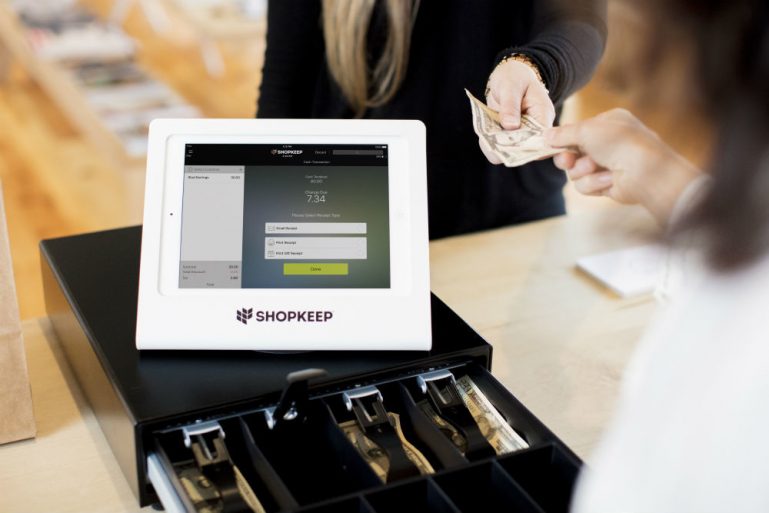
Small Business Basics: What is a Point of Sale Transaction?
As a retail store, restaurant, or coffee shop owner, you’ve likely come across the term “POS” or “POS” transaction.Or maybe you first came across it as a customer at one of these establishments.
You look at the debit card or credit card app on your phone and see “POS transaction” and ask yourself, “What is a POS transaction?”
Rest assured, you’re not the first merchant or shopper to ask yourself this question. As more advanced technologies and novel payment methods become commonplace, it can be difficult for busy business owners and consumers to keep up. That’s where this post comes in. We’ll help you understand the term POS and how it might impact your business.
What is Point of Sale or POS?
The first thing you’ll want to understand about “POS transaction” is that it’s actually an abbreviation for the term, “point of sale.” In this case, point of sale, or POS, is referring to a point of sale system. A POS system is a suite of technology used by retailers and restaurant owners to accept payments from customers, among other tasks.
Taking a step back, point of sale can also refer to any place where a sales transaction can take place. This typically means the counter at a retail location or coffee shop. If you’re at a classic diner, where you pay a cashier instead of giving your money to a waitress, that area by the cash register is also considered the point of sale.
With that in mind, you can see how a technology that’s designed to help merchants accept payments, as well as perform related functions, could earn the name “point of sale system.” Let’s take a closer look at how these systems work, to help you understand how one might benefit your business.
What is a Point of Sale System?
The first concept to understand about a POS system is that it’s comprised of two components: point of sale hardware and point of sale software. Together, these two components give merchants all of the tools they need to accept popular payment methods, as well as manage and understand their overall businesses. Let’s start with hardware.
POS Hardware
We’re starting with POS hardware because one of the most significant business decisions that you will have to make, is directly connected to your POS equipment. That decision is whether you’ll choose a PC-based or legacy POS system, or a tablet-based, mobile point of sale (mPOS) system. We’ve covered the pros and cons of each in previous articles, so we won’t dive into it too deeply now.
However, it’s important to note that this is one of the biggest decisions you’ll make for your business, so you should take your time and make a considered decision.
Once you’ve decided whether you want to use a tablet or a PC as your POS terminal, you’ll want to add other complementary pieces of hardware to flesh out your system. Here are some of the components you’ll want to consider adding:
- Credit Card Reader – This piece of hardware allows you to accept debit card, credit card, and gift card payments. You might also want to look for a more advanced version that lets you take EMV chip payments and NFC payments, so you can also accept solutions like Apple Pay and Google Pay, as well as modern debit cards and credit cards that have a chip in them.
- Barcode Scanner – If you run a retail shop, this tool will help you check out customers faster, providing a higher level of service. Depending on your POS system, you may also be able to use your scanner to add inventory to your system by scanning it versus the more tedious process of manually adding it via a computer.
- Printers – The primary purpose of a printer is to give you the ability to print out receipts for customers, especially if you accept credit cards. But you can also use it to print end-of-shift reports like your Z Report to stay on top of your business. If you run a restaurant, you might want to invest in a second printer for your kitchen. This allows you to send orders directly to cooks to reduce wait times and ensure order accuracy.
- Cash Drawer – The last big piece of hardware is a cash drawer. The purpose of a cash drawer is pretty straightforward: it’s a safe place to store cash throughout the business day.
That about covers it as it relates to hardware and POS systems. The second and final aspect of POS systems to review is the POS software.
What is POS Software?
As you might be able to guess, POS software is the brains behind the operation. It’s what runs on the PC or tablet interfaces of POS systems, allowing merchants to run transactions and manage their overall businesses. If we’re honest, once you get past the PC and tablet divide, the software is what really separates most POS systems from one another.
With that said, let’s look at some of the major features of point of software. But before we do, it’s important to note that POS software includes two parts: the cashier component and the business management component. Each is powerful and can transform the way you run your business.
Register Software
The register software, or register application is the cashier facing part of POS software. It’s where the cashier will ring up transactions, and the customer will pay for their purchase. It’s also where the cashier will perform other tasks related to the purchase, like applying discounts, or processing returns and refunding money if needed.
Many modern point of sale systems include advanced features as part of the register. For example, you might find extra tools like:
- Time Clock – This lets your employees clock in at the POS instead of a separate time clock.
- Customer Marketing – Many systems allow you to collect customer email addresses to send marketing emails.
- Register Reports – You should expect access to some essential reporting tools right on the register of your POS. The most common reports found on the register are shift reports. Typically, these reports provide information like total sales, total discounts, total returns, a breakdown of sales by tender type, and data like who opened the register, as well as the open and close amount.
Together, these tools give you far more control over your day-to-day business operations over traditional cash register systems. But we’re just scratching the surface of what POS software can do.
Business Management Software
This part of the point of sale software equation either runs on a desktop PC as installed software, or in more modern systems, it’s accessible via any web browser. Business management software includes all kinds of advanced features that will help you better understand and run your business.
Inventory Management
This tool helps you understand all aspects of your inventory. That could mean anything from basic tracking of your stock levels, to setting up reorder triggers, so you’re never short of a valuable inventory item.
Back Office Reporting and Analytics
Outside of inventory tracking, reporting is one of the biggest reasons to purchase a point of sale system. These reports give you insights into all aspects of your business to help you make smart decisions that improve your efficiency and profitability. This could mean anything from identifying your best and worst performing sales people to understanding the most popular payment methods (credit, debit, check, mobile, etc.), so you can create the best experience for your shoppers.
Employee Management
Modern point of sale systems can help you manage employees by making it easy to track hours worked, and sales performance if applicable. This helps you reward your best staff, and coach those who need the most help. It can also simplify tedious tasks like payroll and scheduling.
Third-Party Integrations
The business management side of modern POS systems can best be thought of as the “mission control” of your business. Because of this, you want your POS to integrate with the other apps and software you use to run your business. Some of the more common integrations include email marketing, accounting, and ecommerce. With these integrations, you can run a more efficient and profitable business, because data is shared between each.
Here’s a few quick examples of how that might play out:
- Accounting – All of your sales data is sent to your accounting software at the end of each day, saving you time and ensuring accurate bookkeeping.
- Ecommerce – When you sell an item in your brick and mortar store, it’s automatically removed from your online store, preventing out of stock issues and angry customers.
- Email Marketing – When you collect a customer’s email address with your POS, it’s automatically synced over to your email marketing tool for future promo campaigns.
SEE ALSO: The 8-Minute Guide to Ecommerce vs. Traditional Commerce
Wrapping It Up
There you have it, the major features and functionality of a POS system. We hope that this has demystified some of the confusion you might have been feeling around the issue. The next time you look at your checking account and see “POS” or “point of sale” next to one of your debit card transactions, now you’ll know it’s nothing to be concerned about.
And if you’re a retail or food service business owner, hopefully, you now know enough to decide if a POS system is right for you.
Want to try ShopKeep for yourself?
Just answer a few easy questions.
Need help finding the right point of sale?
Just complete the form. We’ll call you right back to explain how ShopKeep can work for you.
Hit the ground running.Sprinting, in fact!
Read our free, comprehensive guide, Small Business 101, to learn all you need to know about starting a thriving business.

